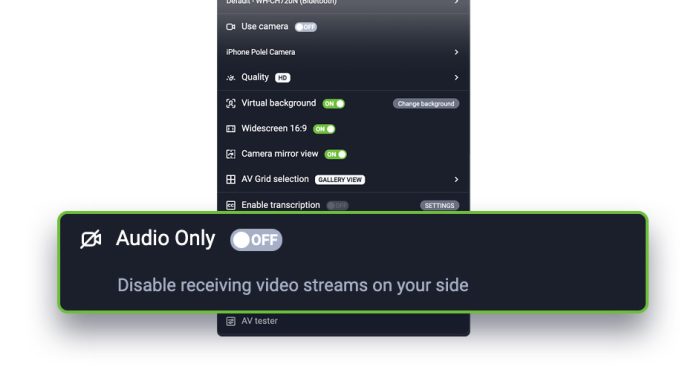Even the best advertising won’t attract attendees to a webinar if the event’s topic doesn’t capture their attention. So before you start planning your promotion, learn to find inspiration and hit the issues that appeal to them.
Table of Contents
First of all, get to know your customers well
Whether running a company that wants to attract new customers or you’re in the education business, your audience has to remain at the heart of your efforts. If you don’t know who you’re talking to, you won’t know what to talk about or how to talk about it either!
A webinar must include more than just a marketing and sales presentation. Present yourself as an expert and share your knowledge and experience with others. The best way to win a loyal audience is to solve the problems troubling them.
If your webinar includes elements of promotion, try to find a topic that:
- Will address situations your potential audience is facing.
- Will offer advice to solve their problems and benefit them.
- Will indicate why you and your product or service will solve these problems.
So start with a solid recognition of who your customers are, what their ACTUAL problems are, what questions they are asking and what they are looking for. You won’t need any additional tools at first. What should you do?
- Review reports that present current data and trends for your industry.
- Review the comments and questions that have appeared on your social media over the past 2-3 months. If there is not much going on there (which you need to work on!), look at your competitors.
- Check the portals with customer ratings and reviews. You will find their up-to-date expectations and suggestions made by your target audience.
- Go to YouTube and start typing in queries related to your industry. If you’re finding a lot of content for a particular phrase, and it’s recorded in the last 3-6 months, that might be a good lead. If you’re typing in a question that customers often ask you, but fail to find any videos, then you’ve probably discovered a niche!
- Use Google Search Console – and be sure to do so! Find out what keywords bring users to your website or blog and what pages they visit.
- Identify what content engaged your site users the most. With the help of free Google Analytics, you will check which blog post was the most popular and held the readers’ attention for the longest time. Of course, you will also find out which sites or articles were not so warmly received – a treasured piece of information!
- Talk to salespeople and those working in customer service. If there is no time for this, look, for example, at the CRM system you use. The more information, the better: analyze the records of chat conversations or emails received. If a specific topic or query overlaps with what users type in search engines, it’s worth following that lead.
- Yes, only now is the time to check what webinars your competitors do. Take a look at their YouTube channel or website, where they publish webinar recordings. See what they’re covering, what kind of questions their users ask, and which videos get the most views.
Prepare a topic list
If you want webinars to work and help you grow your business, you need to be consistent and follow a specific, repeatable plan.
You will certainly be able to find a great deal of inspiration. But this is just the beginning. First of all, write down all ideas for event topics, even those that seem less interesting at first glance. Then group them. Arranging them thematically will be a good starting point.
Remember that your audience chooses webinars for the comfort they offer. So it is your responsibility to make them as convenient as possible. Above all, you must manage your time well. Webinar attendees will maintain attention for 45-60 minutes. For young people and children, this time is even shorter. If your list of topics includes an extended issue, think about dividing it into several events. This will allow you to prepare even more expert content and reach a wider audience.
Segment the topics
Consider whether the topics on your list are of interest to all your customers. There is no point in sending an invitation to an “introductory webinar” to people who have been using your product for a long time. But it could also happen that a topic will be too advanced from the perspective of newbies to your service or a specific topic/
Verify your ideas
List of ideas is ready? Great! Before proceeding, you still need to see if they will interest your audience. How to do that? Again, the best way is to talk to your customers. You can ask them if they would be interested in the chosen topic and request suggestions. How?
Send a survey to your mailing base, allowing customers to vote on the suggested topics. You can also display such a poll to the attendees of a webinar you are hosting already. The best time to do this is during the final part of the event.
Collecting questions you may answer during the event is also a good practice. You can use, for example, your social media to do so.
Sometimes the best results come from verifying the content directly. For example, before you host a live webinar, prepare a webinar available in an on-demand format (or even several webinars of this type!). Enable questions to stay in touch with your audience, and see which content will be most popular.
Also, check if someone ( for example, your competitor) has not prepared a webinar on the same or similar topic earlier. Watch it and analyze it. This way, you will find new inspiration and avoid mistakes that others have made. You can do it better!
Expertise matters
Of course, you can skip all the above points every time. If you find a topic that suits your audience’s expectations, proceed. Look for inspiration, review what your competitors are doing, and be inspired by them, but don’t copy their actions. Your customers are unique.
Finally, I have a very important piece of advice for you that will help you create even more interesting webinars and increase your reach without additional costs: do webinars with partners. Two experts are better than one. Do you collaborate with an expert who excels in a particular field? Do you enjoy the services of a company that is recognized in the industry and has a good reputation? Invite them to attend your event as a presenter or additional expert. This is an easy way to increase the event’s attractiveness and reach an audience following not only you and your business but also the other specialist.









